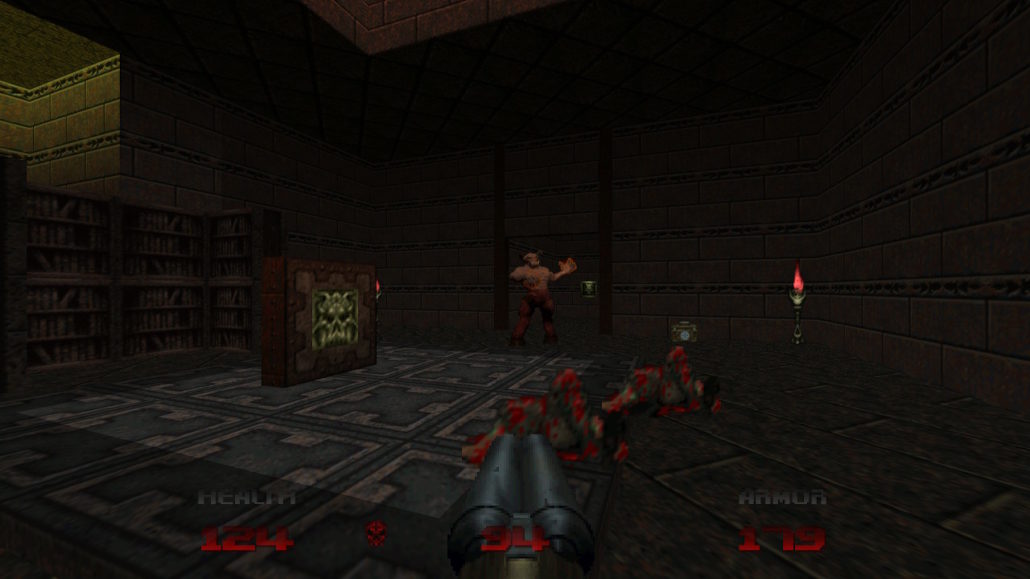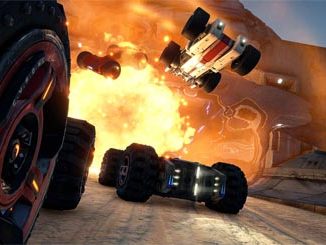Published by Bethesda – Developed by Nightdive Studios/id Software/Midway – Out Now on PC, PS4, Switch (version tested) & Xbox One – 1 Player
Doom is often cited as the genesis of the first person shooter. The benchmark of the genre that went on to spawn a seemingly infinite number of imitators. However, in a time when innovators like Goldeneye and Turok Dinosaur Hunter were all the rage, Doom 64 was destined to be the underdog. The mid to late 90’s were all about having the best graphics and trying to be as ‘realistic’ as possible. The only popular games that didn’t do polygons, were games with gimmicks, like Duke Nukem, and obviously fighting games were an exception to this rule. This meant that Doom 64 never really found a broad audience, which is a damn shame, as it is now widely available on all current formats, we are only just discovering that Doom 64, is arguably the greatest moment in the series’ history. Although it looks like Doom 64 has been released to herald in the new Doom Eternal, which itself has received suitable praise, it seems to have been overshadowed by the arrival of a 4 quid curiosity from over 20 years ago.
The game’s look is very similar to the original Doom’s with the centralised weapon sprites, and enemy sprites standing out from the 3D rendered environments. Like the original, the animation is pretty low-tech, with each baddie only having a few frames to try and take you down. But they look so much better in this sequel, using all of that N64 power. The demons have much more detail to them and have that mid 90’s silicone look that was popular at the time. The gameplay is fast and furious, with so much going on at any one time. The maze like levels are quite challenging, requiring you to figure out puzzles, often involving switches, keys and secret doors. The lighting in this installment is much darker, adding to its hellish atmosphere, which up to this point wasn’t really present. Yes the previous Doom’s were all set in hell, but the lighting and atmosphere were hardly geared towards the horrors you’re facing. This goes a whole lot further in Doom 3, and you can’t help but feel this game bridges that divide between the earlier Doom’s and the third, fully 3D survival horror. Despite its spooky dark atmosphere, the contrast was a bit of a problem playing in handheld mode. Light reflecting on the screen meant it was difficult to see a good portion of what was going on, so whenever playing away from the big telly, it was vital to crank up the games brightness. However, playing on the TV posed no issues whatsoever.
The sound design in Doom 64 is stellar. Everything from the unsettling music, to the extremely satisfying weapon and death noises. The super shotgun is one of the best weapons in any video game, and has such a meaty feel to it, you really do get a sense of being unstoppable when mowing down hoards of demons. There’s a satisfying crunch when you take down the enemies too, ending up in a visceral pile of gore (which at the time was quite the surprise for an N64 title, as Nintendo were very family friendly back then). As with most games, it gets much more difficult the further you progress, but you figure out what weapons are best suited to which hell beast and how to take them down effectively. However it is difficult to imagine making progress in this using the awful N64 controller without getting frustrated. The game plays beautifully using the Switch’s Pro Controller, but even then, some of the levels are punishing.
Doom 64 has plenty of extras, including the Lost Levels, which were cut from the original Doom 64 but are available to play as a smaller game, which itself is quite difficult. There are bonus hidden levels as well, although don’t expect to find these without a guide, as the key to unlocking them is very specific. Doom 64 feels like a long lost secret, finally unveiled to the rest of the world. Despite it being released some 20 plus years ago, it is seldom mentioned in console or era retrospectives unless you are specifically looking for it. The fact it’s taken this long for a remaster/rerelease is criminal, but its budget price more than makes up for that. Not only is it a brilliant installment in the series, it’s arguably one of the best first person shooters ever made. If remasters can qualify, this is a contender for game of the year.









Be the first to comment